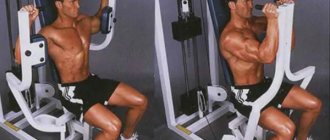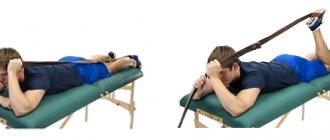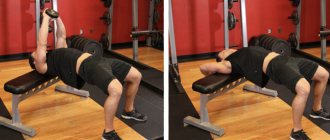This article will be of interest primarily to those amateur athletes who participate in competitions in order to understand what preparation for a competition is. The principle is taken from many years of boxing practice, but this principle is quite suitable for other martial arts: kickboxing, Thai boxing, mma, karate do, etc.
Features of the training of amateur athletes depending on the proximity to the competition. The entire training cycle of an amateur or professional fighter can be divided into 4 large stages.
Basic stages of boxer training
Training an amateur boxer, regardless of the place of training - in the gym or at home, includes five stages:
- warm-up;
- technical training with practicing movements around the ring;
- practicing punches on the punching bag, paws, working in sparring;
- exercises for muscle development;
- final part.
Warm-up is mandatory preparation for heavy physical exertion of muscles and ligaments to prevent muscle pain and injuries. It includes a sequence of light gymnastic exercises that engage all muscle groups - from the neck to the ankles.
In a gym or large room, some of the movements can be performed by jogging in a circle (running with head turns, swinging arms, raising knees).
At the second stage:
- elements of combat are mastered, then improved and brought to automatism - strikes, dives, dodging, moving around the ring with steps and short jumps;
- development of speed of movement, reaction, dexterity, development of excellent coordination;
- psychological preparation for work in the ring.
Sparring is designed to train technique in conditions “close to combat.” Paw work teaches you to strike hard at a “moving target.” The pear makes it possible to bring the very force of blows to the maximum.
The fourth stage - pumping up muscles - is as important as all the previous ones. Strength training for fighters differs from that of bodybuilders, but a boxer needs to train because:
- without powerful triceps and shoulder girdle there are no strong blows;
- strong abdominal muscles are needed for endurance and the ability to withstand blows to the body;
- when pumping your abs, you need to put a load on the long back muscles so as not to damage the spine;
- Strong legs and glutes are required to move around the ring with endurance and speed.
You should complete your workout by walking slowly, shaking your arms in a relaxed manner to relieve tension from tired muscles.
How to bandage your hands
Before training, just like before a real fight, boxers bandage their hands to protect them from injury. Beginner boxers are taught how to wrap their hands literally from their first training sessions; in fact, this is where boxing practice begins.
There are many ways to bandage your hands, but the most popular are:
Method 1 (boxing practice):
The practice of such bandaging appeared and operated in the Soviet Union. The loop of the bandage is placed on the thumb and first the bandage is wrapped several times around the wrist. Then they make one turn around the thumb, then one turn around the wrist and bandage the fingers in turn, after each making one turn around the wrist. Then they wrap it a couple of times around the striking surface of the hand and wrap the bandage around the wrist.
Method 2 (boxing practice):
Putting the loop on the thumb, make two turns of the bandage around the wrist. Then place the bandage behind your index finger, wrap it around it, and wrap it around your wrist. The remaining fingers are wrapped in the same way. Wrap around the wrist, then three times around the striking zone - the heads of the bones of the index and middle fingers. Wrap around the wrist, around the thumb three times. Then the problem areas (wrist, striking area or thumb) are bandaged and wrapped around the wrist.
Method 3 (practice):
Having secured the bandage on the thumb, bandage it around the wrist joint. Then the metacarpal phalanges of the fingers and each joint separately are bandaged. Then the thumb is bandaged and ends on the wrist joint of the hand.
Professional boxers can use more complex methods of bandaging their hands, but their hands are bandaged by assistants.
Working on technology
If you want to train at home in order to become like the king of the ring in appearance, to develop muscles like a boxing champion, and not a bodybuilding champion, we do not recommend doing only strength exercises for boxers, neglecting technique. Follow the entire fighter's training program, strengthening your body and spirit.
The first and subsequent boxing training sessions certainly include practicing:
- correct strikes;
- various combinations;
- defensive movements - escapes, ducks, dives, blocks.
The five punches at the heart of boxing:
- Jab - a straight punch with the front hand. The elbow is fully extended, the clenched fist is turned palm down.
- Cross - a direct strike with the far hand.
- Hook - a side blow with a hand bent at the elbow. Applicable only at close or medium range.
- Swing - a side strike with a straightened arm in long-range combat.
- An uppercut is an upward blow in close combat.
Best punch combinations:
- double strike - left jab, right cross (hereinafter - vice versa for left-handers);
- two left jabs, right cross;
- left jab, right swing;
- Left uppercut, right hook;
- Right uppercut, left hook.
Start by practicing individual strikes, then add combinations to them, but not earlier than the third week of classes.
An approximate program of technique exercises without a sparring partner at the initial stage of training:
- jabs from a front stance (FS) - feet shoulder-width apart, knees slightly bent, fists near the chest;
- slopes from one's stance (SS) - the weaker leg and arm are brought forward, the second protects the jaw, the strong arm is at chest level;
- crosses from SS;
- SS dives;
- hooks from FS;
- blocks from SS;
- uppercuts from FS.
Do each exercise one round lasting 3 minutes (if it’s hard - 2 minutes).
Having mastered these basics of technique, continue to train the correct movements and reactions while mastering movements around the ring (or other battlefield).
Warm-up
You need to start by walking slowly around the room while simultaneously moving your head to warm up your neck muscles.
Then:
- Slightly speed up your gait and perform various movements with your arms, followed by turns of the body;
- Walk in a “duck walk” for 3 minutes, while simultaneously stretching your hands and wrists;
- Walk in place, raising your knees high.
After you have warmed up thoroughly, do muscle stretching exercises. Be sure to also stretch the spine, since the training program includes exercises for the back.
Mastering movement
Practicing technique and speed of movement is just as necessary in boxing as training powerful and sharp blows, otherwise instead of a fighter in the ring there will be a dummy that a fast opponent will beat without allowing him to respond.
So from the first days, even when training at home, it is important for a boxer to master:
- steps on toes back and forth;
- steps and jumps left and right, jumps back;
- moving to the side in a circle;
- diving trips.
Perform fast movements for as long as you can. In the first days and weeks you will get tired quickly, but over time your speed and strength endurance will increase. Banish laziness and train hard, at the same time getting a serious cardio load, improving the condition of the respiratory and cardiovascular systems.
Once you have learned how to move your legs correctly, include training in moving kicks in your training program. Learn to hit both forward and backward. By retreating while throwing punches, the boxer disrupts the opponent's attack and even gets the chance to make a devastating counterattack.
Circular training helps to train effectively by performing cardio exercises and simultaneously loading your muscles, which is also useful for boxing.
Circuit training
Boxing lessons for beginners are useless if you do not pay attention to developing muscle strength and strength endurance. So, both in specially equipped and home gyms where boxing classes are held, you can often observe circuit training.
Recommended for beginners:
- pull-ups;
- lifting the body from a supine position;
- lunges with legs alternately forward and backward;
- pushups;
- bending forward with dumbbells in hands;
- jumping rope;
- bending to the sides with dumbbells in hands.
All exercises are done in one approach, then rest for 2-3 minutes and perform in the same sequence. Just 4-5 approaches.
The number of repetitions of each exercise depends on your physical characteristics, as well as the available weight of dumbbells or other weights. Let's move on to the equipment that boxers often and successfully train on.
Work on shells
Features of strength training for boxers using bodybuilding equipment:
- perform each exercise with a working weight no heavier than 70% of the maximum weight with which you can perform the movement;
- lift the weight at maximum speed, since the boxer needs to first develop explosive power, and the beauty of muscles and physique will follow;
- do not pump up your biceps, this will harm the sharpness and power of your blows, pay special attention to your triceps, shoulder girdle, chest muscles and upper back.
Important! Boxers work out, preferring basic exercises with a barbell and/or dumbbells, which allows them to increase physical strength. Exercises to increase muscle mass and “drawing” the ideal relief are not included in the program: the kings of the ring already look great.
Recommended exercises:
- bench press (for triceps and chest);
- deadlift (for long back muscles);
- jumping out of a squat with a barbell on your shoulders (for legs);
- standing press (for triceps and deltoids);
- Bent-over rows (for the latissimus dorsi and trapezius muscles);
- lunges with a barbell on the shoulders;
- bending to the sides with weights.
Be sure to add 1-2 abdominal exercises to them, without any equipment.
To optimally combine boxing classes with visits to the gym, you can adhere to the following schedule:
- first day - work on apparatus in the gym;
- second day - rest;
- third - boxing classes;
- fourth - work in the gym;
- fifth - rest;
- sixth - boxing classes;
- seventh - rest.
If you train at home and do not depend on the weekly schedule of the gym, a more intense schedule will suit you:
- first day - boxing training;
- the second is work on projectiles;
- the third is rest.
Important! You can do any exercise performed in a barbell machine at home with dumbbells.
Boxing section in Perovo (8-903-684-44-66)
| Day | Children | Children-sports | Adults |
| Tuesday | 17:00-18:00 | 18:00-20:00 | 20:00-22:00 |
| Thursday | 17:00-18:00 | 18:00-20:00 | 20:00-22:00 |
| Saturday | 12:00-13:00 | 13:00-14:30 | |
Basic exercises for training a boxer
We must not forget about the eight most useful movements that can be performed as a set of exercises for a boxer (remembering the warm-up). They develop well the qualities needed in boxing.
Run
Running is a key element in the training of healthy lifestyle fans, but it is also included in boxing exercises, since running training strengthens the body, increasing endurance, leg strength, strengthening the heart, blood vessels and ligaments, and developing breathing.
If your physical characteristics leave much to be desired, before becoming a boxer at home, devote 3-4 months to running. We advise you to start with jogging (2-3 kilometers), then add sprinting to your training program - running 60 and 100 meters.
One arm burpee
This exercise is a very effective technique for developing the muscles involved in boxing.
If at first you don’t succeed in it, start training without burpees, and add it to your training program after increasing your training.
Lying jumping
Rules for performing this element of strength training:
- starting position - emphasis, lying on your fists;
- pull your right leg towards your hand with a jump, return to IP;
- do the same with your left foot;
- the exercise continues until the last 2-3 repetitions are difficult.
Perform at least 2 approaches, over time increase their number to 3-4.
Timed push-ups
This is a universal boxing exercise. If you do push-ups for a while, making each movement with your arms as quickly as possible, your explosive power will quickly increase.
It is useful to alternate different execution techniques. For example, if you place your hands narrower, the load on the triceps will increase, and wider - on the chest muscles. If you have enough strength, do push-ups on one hand - first with your left, then with your right.
Fold with one leg alternating
An element of speed-strength training for a boxer, useful for simultaneously loading the core muscles and all the abdominal muscles. It is highly recommended for inclusion in independent training programs.
Twists diagonally
Good load on the oblique abdominal muscles. Included in the training plan of the novice boxing enthusiast, together with the crease, they provide maximum abdominal power.
Jumping rope
They guarantee a good cardio load, strengthening not only the legs, but also the heart. Mandatory when practicing boxing at home.
Note that many boxers prefer to alternate jumping ropes on each leg instead of both.
Gun
Pistol squats are called single-leg squats, which provide excellent load to the leg muscles. This is an excellent exercise for those learning boxing at home.
Fighting excess weight
Most professional boxers are familiar with problems with excess weight. In order to bring your body weight back to normal, especially before the control weigh-in, there are a huge number of exercises. We will list the most common and available in any gym:
- Practicing blows on a punching bag (bag) - maximum impact is provided for 3 minutes with a minute break between approaches (depending on endurance, 3 or 5 such “rounds” are selected);
- Jumping rope - 3 sets of 10-15 minutes with a break of 5-7 minutes. This exercise is basic for burning weight, since up to 120 calories are consumed in 10 minutes of intense jumping;
- Running – uses a slow pace for long distances (from 3 km). With the help of this exercise, metabolism is accelerated, the cardiovascular system is strengthened, and stress is relieved.
Losing excess weight is impossible without a proper nutrition program. It is recommended to exclude fatty foods, sugar, and fast food from the diet. On average, a boxer spends 3-4 thousand calories per day during intense training. To “dry” you need to consume 300-400 calories less than the energy consumed.
Sets of exercises for boxers for home and gym
We will also present comprehensive exercise programs for the physical training of boxers that deserve attention. They serve the same purpose - developing strength and endurance, helping to increase the power of strikes.
Workout in the gym
The complex, which includes a boxer’s physical exercises performed in the gym, is designed for three strength training sessions per week.
1st workout:
- for legs - lunges or squats with a barbell on the shoulders or extensions in the simulator;
- for the lower back - bending over with a barbell on your shoulders or deadlifting;
- for triceps, deltas and many other muscles (basic exercise) - bench press while sitting or standing;
- for medium-sized deltas and trapezoids - swing dumbbells to the sides while standing.
2nd workout:
- for the upper back, deltas and trapezius - pull-ups with an overhand grip wider than shoulder width;
- for triceps and chest - dips, close-grip bench press or French press;
- for the front deltas - swing dumbbells forward while standing;
- for legs - jumping out of a squat with weights.
3rd workout:
- for legs - jumping onto a bench or other height with weights;
- for the chest and triceps - wide-grip bench press or lying dumbbell fly;
- for the lower back - deadlift or hyperextension (lowering the torso and lifting it with a bend in the back from a face-down position, the torso above the floor, legs fixed on the bench);
- for the rear deltas and upper back - bent over dumbbell raises.
We recommend doing an abdominal exercise at the beginning or end of each boxer's strength training session. To pump yourself up properly, do each exercise in three sets of 8-12 repetitions, resting 2 minutes between sets.
Simplified program at home
The home training program involves the use of a small number of equipment that do not take up much space in the house and fit well into the interior of the room.
For such boxing training for beginners, it is enough to purchase:
- collapsible dumbbells;
- a lightweight bar or just a metal rod weighing about 10 kilograms;
- medicine ball (medball) weighing 5-10 kg;
- boxing gloves and punching bag.
Training program - 3 times a week boxing exercises on technique and punching power (with training on a punching bag) and 3 times a set of strength exercises:
- Squats with a medicine ball. Starting position: feet shoulder-width apart, ball at chest. Sit down and stand up, raising your hands with the ball or slightly throwing it up.
- Push-ups with clapping.
- Throwing the bar (rod) away from you.
- Lunges with a medicine ball in hands.
- Twisting.
- Pump with dumbbells - bending left and right with raising the right and left arms to the armpit.
- Pushing honey ball with one hand against the wall.
These exercises are also done in three approaches each. If physical data allows, you can perform them according to the principle of circuit training.
FRIDAY: Easy Day
- Running 5-8 km
- 100 push-ups
- 100 body raises
- stretching
Friday is your easy days. Be lazy and have fun. Run with your friend and talk about everything. 5-8 km will fly by before you notice it. You don't even have to warm up or anything. If you still have a lot of energy left, spend it on stretching. Don't try to add extra load.
SATURDAY/SUNDAY: Rest only!
Just rest! DO NOT, I repeat, DO NOT train on Saturday or Sunday. Enjoy your life outside of boxing. Don't try to burn every gram of energy you have. It's a common mistake newbies make to waste all their energy on days that aren't important. If you're filled with joy and excitement to work out, GREAT - save that for your workouts during the week!
- Your long-term goal is not to succeed.
- Success is inevitable if you do something with persistence and consistency.
- Your long term goal is to stay motivated!
Staying motivated means not using up all your motivation. Maintain that mental toughness and allow your passion for boxing and training to grow.
The secret to always having the energy to exercise is to always use less than you have.
Recommendations from experienced trainers
Reputable experts give beginners the following advice when creating a personal training program for boxing:
- Avoid curling exercises (for biceps), with the exception of pull-ups, and even those are preferable with a wide grip - with the main load on the “wings”.
- Boxing classes and pumping up muscles in the gym should be performed according to a single schedule and a strict system, correctly combining one with the other. Long breaks between workouts are fraught with serious problems with movement, technique, speed and force of strikes.
- Do boxing, not bodybuilding, that is, only according to the physical training program for a boxer. Consult with boxing trainers, politely refusing assistance from fitness instructors.
Develop explosive strength and strength endurance, which is what boxing classes at home serve. Along with a beautiful figure, you will gain agility, excellent coordination of movements, the power of blows, excellent breathing and a cardiovascular system that will be the envy of the “jocks”.









